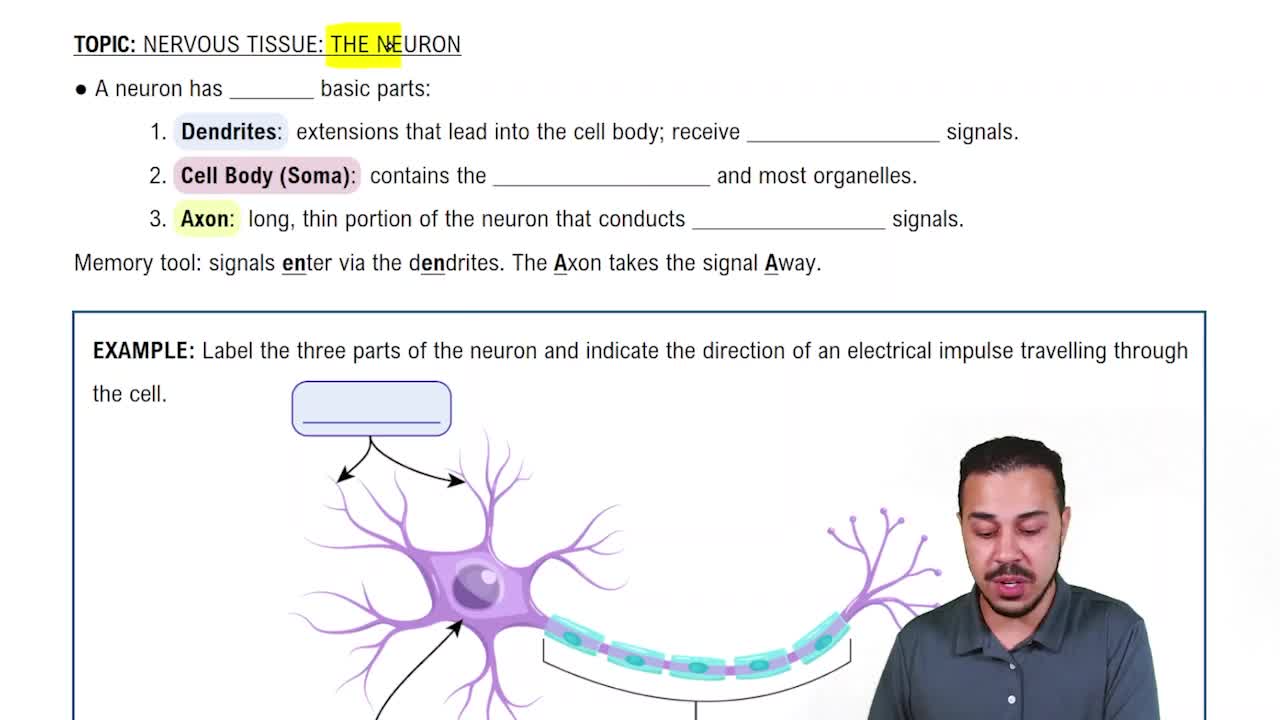Here are the essential concepts you must grasp in order to answer the question correctly.
Autonomic Nervous System (ANS)
The Autonomic Nervous System (ANS) is a component of the peripheral nervous system that regulates involuntary bodily functions, such as heart rate, digestion, and respiratory rate. It operates without conscious control and is divided into the sympathetic and parasympathetic systems, which have opposing effects on target organs.
Recommended video:
Somatic vs. Autonomic Nervous System
Efferent Neuron Chain
The efferent neuron chain in the ANS consists of two neurons: the preganglionic neuron, which originates in the central nervous system (CNS), and the postganglionic neuron, which extends from a ganglion to the target organ. This two-neuron arrangement is essential for transmitting signals that control involuntary functions.
Recommended video:
Innervation of Skeletal Muscles
Innervation of skeletal muscles is primarily controlled by the somatic nervous system, not the ANS. The somatic system uses a single motor neuron to directly innervate skeletal muscles, allowing for voluntary movement, whereas the ANS regulates smooth and cardiac muscles, as well as glands, which are involuntary.
Recommended video:
Structure of a Skeletal Muscle Example 2




